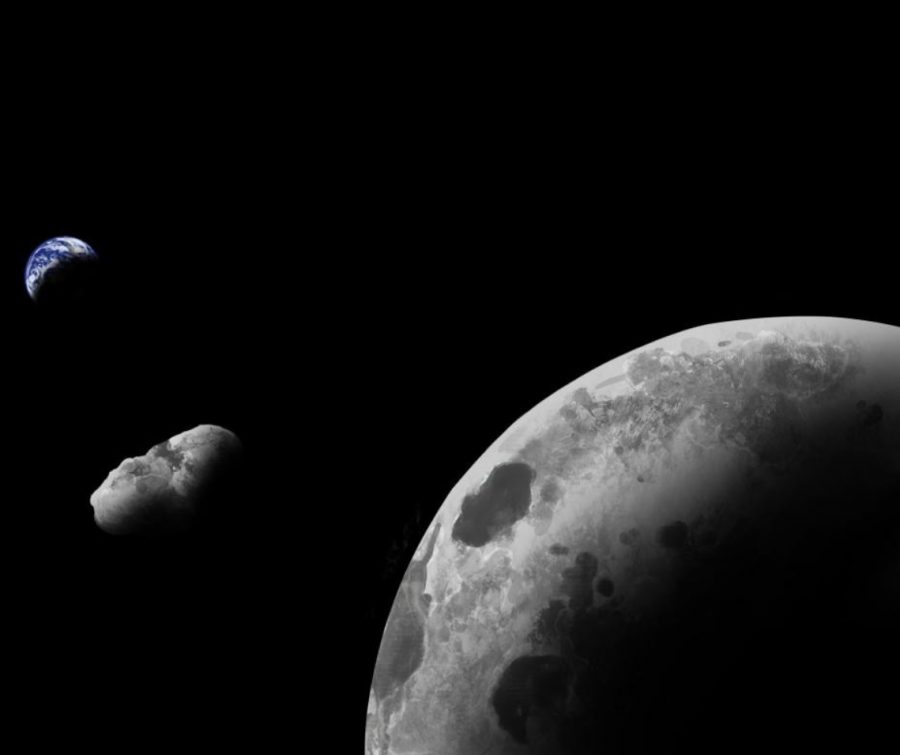Quasi-satellite: Kamoʻoalewa
Addy Graham/University of Arizona
An impression of Kamo’oalewa between Earth and the moon. However, the distances are inaccurate.
November 13, 2021
A quasi-satellite is an object stuck between the gravitational pull of the sun and a planet. Earth has five known quasi-satellites, Kamoʻoalewa is the most stable of these five. It was discovered on April 27th, 2016 by Pan-STARRS, a Hawaiian observatory, hence the name referring to a oscillating celestial object in Hawaiian. The asteroid is approximately 41 meters (135 feet) in diameter, about the size of a Ferris wheel.
Little was known about it until recently, since the object is about four million times fainter than the faintest star that can be seen with the naked eye. Upon further study using the Large Binocular Telescope on Mount Graham in Arizona, the spectrum of reflected light was found to closely match that of lunar rocks from NASA’s Apollo missions. Leading scientists to believe it originated from the moon in an extreme event between 100,000 and 500 years ago. Ben Sharkey, a PhD student at the University of Arizona, stated, “I looked through every near-Earth asteroid spectrum we had access to, and nothing matched,” leading to the comparison of the moon’s light spectrum.
The asteroid’s name defines it as oscillating because of its unusual orbit due to the gravitational pull of both the Earth and the sun. Paul Chodas, manager of NASA’s Center for Near-Earth Object (NEO) Studies says, “The asteroid’s loops around Earth drift a little ahead or behind from year to year.” Earth is just strong enough prevent Kamoʻoalewa from going farther than about one-hundred times the distance of the moon. This effect, with the gravitational pull of the sun, prevents it from getting closer than about thirty-eight times the distance of the moon. Objects that had drifted towards Earth from the asteroid belt between Mars and Jupiter are unlikely to have such an orbit.


